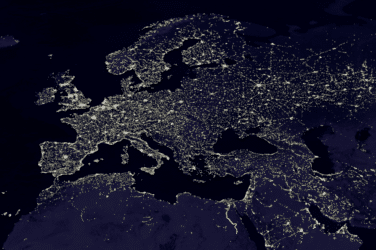

Liquidity discovery is the process of identifying the other side of a trade when it’s not immediately available. And with fragmentation, lack of conviction and volatility at the heart of today’s equity markets, it has become a crucial aspect of trading to help traders access the liquidity they need, when they need it, and at the best possible price.
Liquidity discovery in a difficult macroeconomic environment
2022 has been a rocky year for the European block market, with Large-in-Scale Volumes declining by 14% vs 2021.
Factors such as extended periods of volatility, inflation and uncertainty around the Ukraine geopolitical situation all contributed to a lack of conviction in the market, creating a challenging environment for active managers in the pursuit of alpha.
Gareth Exton, head of EMEA Equities execution & quantitative services at Liquidnet, said: “Our Liquidity Landscape report shows that liquidity is available in Europe but the market is so fragmented that it can be difficult to access. Having access to tools and services that allow traders to seek out that liquidity is essential.”
“We are evolving our service model to also include a set of tools and services that aid in liquidity discovery,” said Chris Jackson, global head of equity strategy & head of EMEA equities. “During difficult market conditions, you must go beyond simply matching liquidity. The introduction of tools such as Targeted Invitations and our rules-based service model provided by our block desk have been a real game changer for our Members. We’ve seen great results with an increasing number of matches.”
The firm takes a data-led approach to increase matches. With the agreement of all parties, the system can interrogate the current and historical footprints of order flow in a stock to identify potential buyers and sellers.
“One of the biggest problems is ships passing, separated by time. Investors can choose to just wait for a ship to come along, but sometimes they need to do more,” Jackson explained. “For example, there may be a buyer in the afternoon but, the seller who was there in the morning has withdrawn their order. The system can identify non-synchronous matches and send a ticket inviting the seller to return to the market.”
Exton added: “Overall, the process of liquidity discovery is complicated. It requires the ability to find the right balance between releasing some information about an order to maximise its chances of finding a match without the market moving once an intention has been revealed, especially for a larger trade.”
With the rapid evolution of the European trading landscape in recent years, the need for liquidity discovery has grown and now goes far beyond simply overcoming challenging macro trends.
Addressing the evolving trading landscape through liquidity discovery
The Close
Liquidnet’s Liquidity Landscape report highlighted that nearly one third of trading volumes now take place in the primary exchanges’ closing auctions.
“The close can be a great source of liquidity but there is a real cost to trading in terms of fees charged by the primary exchanges,’ said Exton. “That, paired the propagation mechanisms allowing to trade at the Close, is creating fragmentation in what is now considered the main liquidity event of the day.”
Liquidnet has been addressing this challenge through innovation and technology in recent years, with the addition of a Trade at Last phase to allow its Members to match and execute at the closing price for a period after the official Close. Enhanced algorithms that allow to take full advantage of this additional liquidity, alongside other Trade at Last facilities, has been appreciated by Members according to Liquidnet.
Small and mid-caps
Finding liquidity has always been more challenging in small- and mid-cap stocks, which has been exacerbated by increased volatility. Therefore Liquidnet has teamed up with Midcap Partners, a boutique investment bank owned by the TP ICAP group who are specialist providers for trading services and liquidity for small and mid-caps in Europe.
Jackson said: “Finding liquidity in small and mid-cap names is a challenge that often goes beyond simply matching sedol codes in a venue. Finding liquidity opportunities in hard to trade names has always been at the core of what we do and this collaboration aligns with our commitment to solve the most difficult liquidity challenges for our Members.”
Jackson continued that the firm’s liquidity discovery process is not purely a set of technologies, but also involves a set of strictly controlled coverage services.
“Technology can go so far but sometimes clients need to engage with a human being before making a large commitment,” he said. “It is similar to using the internet to look for a house. Few would buy it without speaking to an agent.”
“Liquidity discovery has become an integral part of modern financial markets and something we know our Members need. So we’re heavily investing in tools and services that help with this process,” added Jackson. “As we enter 2023, we have an exciting roadmap of buy-side focused innovation to solve difficult liquidity challenges.”









